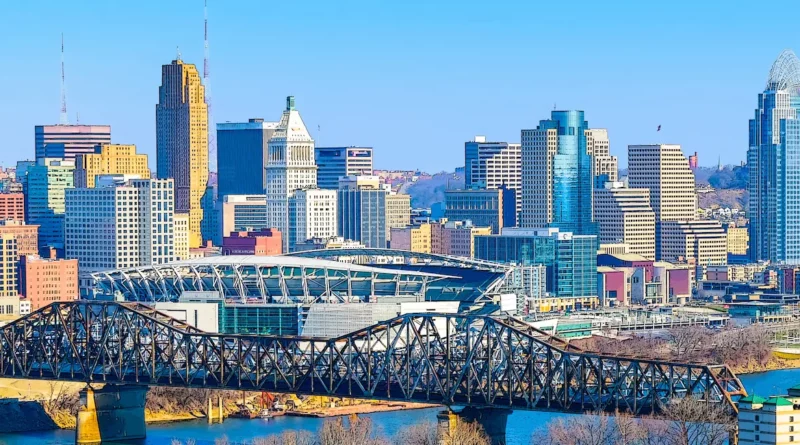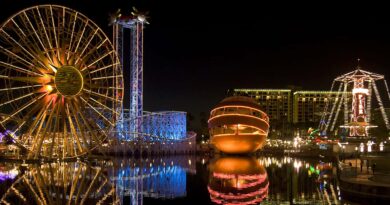History of Cincinnati Ohio
Cincinnati, Ohio, known as the “Queen City of the West,” is a place where the past and present blend seamlessly. Founded in the late 18th century, Cincinnati has evolved from a small frontier outpost on the banks of the Ohio River into a major cultural and economic hub of the Midwest. With a history that spans more than two centuries, Cincinnati has played a pivotal role in the development of the United States, particularly during the westward expansion, the Industrial Revolution, and the Civil Rights Movement. This article delves into the rich and complex history of Cincinnati, tracing its journey from a humble settlement to the vibrant city it is today.
Early Beginnings: The Founding of Cincinnati
The area that would become Cincinnati was originally inhabited by Native American tribes, including the Shawnee, Miami, and Delaware. European exploration of the region began in the mid-1700s, with French and British traders making contact with the indigenous peoples. The Ohio River, a major waterway, played a crucial role in the early exploration and settlement of the area.
Establishment of Losantiville (1788)
Cincinnati’s story officially begins in 1788 when a group of settlers, led by Colonel Robert Patterson, Matthias Denman, and Israel Ludlow, established a settlement on the north bank of the Ohio River. This settlement was initially named Losantiville, a portmanteau derived from a combination of Latin and Greek words that roughly translates to “the city opposite the mouth of the Licking River.”
Renaming to Cincinnati (1790)
In 1790, Losantiville was renamed Cincinnati in honor of the Society of the Cincinnati, an organization of Revolutionary War officers. The name was chosen by Arthur St. Clair, the governor of the Northwest Territory, who was himself a member of the society. The society was named after Lucius Quinctius Cincinnatus, a Roman statesman known for his civic virtue and leadership, symbolizing the city’s connection to the values of the new American republic.
Cincinnati’s Role in Westward Expansion
Cincinnati quickly grew from a small frontier settlement into a bustling town, thanks to its strategic location along the Ohio River. The river served as a major transportation route, facilitating trade and the movement of settlers heading westward.
A Gateway to the West
By the early 19th century, Cincinnati had become known as the “Gateway to the West.” The city’s location made it a critical point for settlers moving into the Northwest Territory, which encompassed present-day Ohio, Indiana, Illinois, Michigan, Wisconsin, and parts of Minnesota. The construction of roads, canals, and railroads further solidified Cincinnati’s role as a transportation hub, connecting the eastern United States with the expanding western frontier.
The Steamboat Era
The advent of the steamboat in the early 1800s revolutionized river travel and commerce, further boosting Cincinnati’s growth. Steamboats allowed for faster and more efficient transportation of goods and people along the Ohio River, leading to an economic boom in the city. Cincinnati became a major center for the trade of agricultural products, particularly pork, earning it the nickname “Porkopolis” due to its large meatpacking industry.
The Rise of Industry and Commerce
As Cincinnati grew, so did its industrial base. The city’s location along the Ohio River made it an ideal center for manufacturing and trade. By the mid-19th century, Cincinnati had become one of the largest and most prosperous cities in the United States.
Meatpacking and Manufacturing
The pork industry was Cincinnati’s first major industry, but it was soon followed by others, including the production of iron, machinery, and textiles. The city also became a center for woodworking, with numerous furniture factories producing goods that were shipped across the country. By the 1850s, Cincinnati was the largest city in the American West and one of the top manufacturing centers in the nation.
The Brewing Industry
Cincinnati’s large German immigrant population played a significant role in the city’s development, particularly in the brewing industry. The first German immigrants arrived in the early 1800s, and by the mid-19th century, they had established a thriving brewing industry in the city. Cincinnati became known for its beer, with breweries like Christian Moerlein, Hudepohl, and Schoenling becoming household names. The city’s Over-the-Rhine neighborhood, named after a canal that reminded residents of the Rhine River in Germany, became the center of Cincinnati’s brewing industry and a vibrant cultural hub for the German community.
Cincinnati and the Civil War
Cincinnati’s strategic location on the border between the North and the South made it a significant player during the Civil War. The city’s economy, which was heavily dependent on trade with the South, faced challenges during the war, but Cincinnati also played a crucial role in supporting the Union cause.
Cincinnati as a Union Stronghold
Despite its economic ties to the South, Cincinnati was a strong supporter of the Union. The city provided troops, supplies, and financial support to the Union Army, and it served as a major supply depot and transportation hub for the war effort. Cincinnati was also home to Camp Dennison, a large Union training camp located just outside the city.
The Underground Railroad
Cincinnati played a critical role in the abolitionist movement and the Underground Railroad, a network of secret routes and safe houses used by enslaved African Americans to escape to free states and Canada. The city’s location along the Ohio River, which served as a natural border between slave and free states, made it a key stop on the Underground Railroad. Prominent abolitionists such as Levi Coffin, known as the “President of the Underground Railroad,” operated in Cincinnati, helping thousands of enslaved people gain their freedom.
The Growth of Culture and Education
In the late 19th and early 20th centuries, Cincinnati emerged as a cultural and educational center. The city’s growing wealth and population supported the development of institutions that would shape its cultural landscape for decades to come.
Cultural Institutions
Cincinnati’s cultural renaissance began with the establishment of several key institutions. The Cincinnati Art Museum, founded in 1881, became one of the first art museums in the country, and it continues to be a leading cultural institution today. The Cincinnati Symphony Orchestra, founded in 1895, is one of the oldest orchestras in the United States and has earned a reputation as one of the country’s leading symphonic ensembles.
The city also became known for its contributions to theater and opera. The Cincinnati Opera, founded in 1920, is the second-oldest opera company in the United States. The city’s Music Hall, completed in 1878, is a stunning example of Victorian Gothic architecture and serves as the home for many of Cincinnati’s performing arts organizations.
Educational Development
Cincinnati’s commitment to education grew alongside its cultural institutions. The University of Cincinnati, founded in 1819 as Cincinnati College, evolved into a major public research university. The university has been a pioneer in various fields, including cooperative education, where students alternate between classroom instruction and practical work experience. Other important educational institutions include Xavier University, a private Jesuit university founded in 1831, and Cincinnati State Technical and Community College.
The Industrial Age and Economic Challenges
As Cincinnati entered the 20th century, it continued to grow and industrialize, but the city also faced significant challenges. The Great Depression, shifts in industry, and population changes all had a profound impact on Cincinnati’s economy and social fabric.
The Great Depression and Economic Decline
Like much of the nation, Cincinnati was hit hard by the Great Depression of the 1930s. The city’s manufacturing base, which had been a source of prosperity, suffered as demand for goods plummeted. Unemployment rose, and many families struggled to make ends meet. The federal government’s New Deal programs provided some relief, but the economic challenges of the era left a lasting impact on the city.
Post-War Changes and Suburbanization
The post-World War II era brought significant changes to Cincinnati, as it did to many American cities. The rise of the automobile and the construction of highways led to suburbanization, with many residents moving to the suburbs outside the city. This shift in population, combined with the decline of traditional manufacturing industries, led to economic challenges for Cincinnati. The city faced issues of urban decay, racial segregation, and economic disparity, which became pressing concerns in the latter half of the 20th century.
Cincinnati in the Civil Rights Era
Cincinnati, like many American cities, was deeply affected by the Civil Rights Movement of the 1950s and 1960s. The city’s African American community, which had a long history of activism dating back to the abolitionist movement, played a significant role in the fight for civil rights.
The Struggle for Equality
The Civil Rights Movement in Cincinnati was marked by efforts to end segregation, improve housing conditions, and secure equal employment opportunities for African Americans. Protests, sit-ins, and boycotts were common tactics used by activists to draw attention to these issues. One notable event was the 1964 sit-in at the Coney Island amusement park, which led to the desegregation of the park.
The Legacy of the Movement
The Civil Rights Movement brought significant changes to Cincinnati, including the desegregation of public spaces and the passage of fair housing laws. However, the city, like many others, continued to grapple with issues of racial inequality and economic disparity. The legacy of the Civil Rights Movement in Cincinnati is reflected in the city’s ongoing efforts to address these challenges and promote social justice.
Modern Cincinnati: A City of Renewal and Growth
In recent decades, Cincinnati has undergone a period of renewal and revitalization. The city has made significant investments in its infrastructure, cultural institutions, and economy, leading to a resurgence in its urban core and a renewed sense of civic pride.
Downtown Revitalization
One of the most visible signs of Cincinnati’s renewal is the revitalization of its downtown area. The construction of The Banks, a mixed-use development along the Ohio River, has transformed the city’s riverfront into a vibrant destination for dining, entertainment, and recreation. The development of Fountain Square, the city’s central public square, has also played a key role in revitalizing downtown, serving as a gathering place for residents and visitors alike.
Cultural Renaissance
Cincinnati’s cultural scene has continued to thrive, with new museums, theaters, and galleries opening throughout the city. The National Underground Railroad Freedom Center, which opened in 2004, is a powerful tribute to the city’s role in the abolitionist movement and a center for the study of freedom and human rights. The city’s Over-the-Rhine neighborhood, once a center of the brewing industry, has been revitalized as a cultural and entertainment district, with historic buildings being repurposed for modern use.
Economic Diversification
Cincinnati has also worked to diversify its economy, moving away from its reliance on traditional manufacturing industries. The city has become a hub for finance, healthcare, and education, with major corporations such as Procter & Gamble, Kroger, and Fifth Third Bank maintaining headquarters in the city. Cincinnati’s strong economy, combined with its cultural and educational institutions, has helped attract new residents and businesses, fueling the city’s growth and development.
Conclusion
Cincinnati, Ohio, is a city with a rich and diverse history that reflects the broader narrative of American development. From its origins as a frontier outpost to its emergence as a major industrial center, Cincinnati has played a key role in shaping the Midwest and the nation as a whole. The city’s contributions to industry, culture, education, and social justice are a testament to its resilience and ability to adapt to changing times. Today, Cincinnati continues to be a vibrant and dynamic city, proud of its past and optimistic about its future.
Discover more from City Towner
Subscribe to get the latest posts sent to your email.




